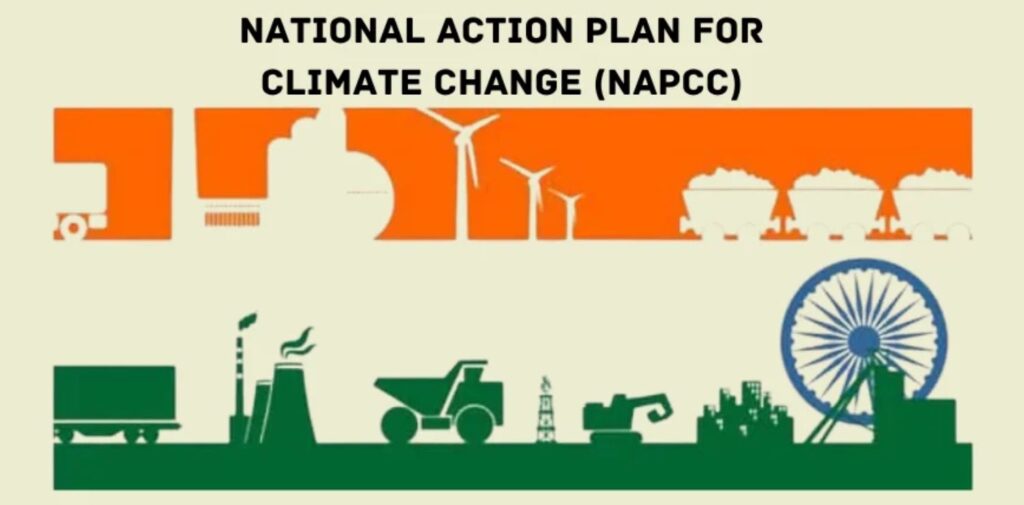India, with its vast landscape, growing population, and fast-developing economy, faces significant challenges due to climate change. From rising temperatures to unpredictable rainfall patterns, the impacts of climate change are already being felt across the country. With agriculture, water resources, and coastal areas at risk, India must take decisive actions to protect its people and its future. In this article, we will explore how India is addressing the challenges of a changing climate and what steps are being taken to ensure a sustainable and resilient future for all.
Understanding the Impact of Climate Change in India
India is particularly vulnerable to the effects of climate change due to its geographic location, diverse ecosystems, and large population. Rising temperatures, extreme weather events like floods, droughts, and cyclones, and shifts in rainfall patterns are among the major challenges the country faces. These changes threaten various sectors, including agriculture, which is the backbone of the economy for millions of rural families. Increased temperatures and erratic rainfall are already reducing crop yields and affecting food security.
India’s coastal areas, home to a large portion of the population, are also at risk due to rising sea levels and frequent cyclones. The health sector is seeing the spread of diseases as changing temperatures increase the spread of vector-borne diseases like malaria and dengue. Additionally, the pressure on India’s water resources is growing, as rivers like the Ganga and Yamuna face reduced water flow, while many areas face water scarcity.
To combat these challenges, India has developed various strategies aimed at reducing the effects of climate change while working towards a sustainable future for its citizens.

Government Initiatives: National Action Plan on Climate Change (NAPCC)
Recognizing the seriousness of climate change, India’s government has taken significant steps toward addressing this issue. One of the most important frameworks in this regard is the National Action Plan on Climate Change (NAPCC), launched in 2008. The NAPCC outlines India’s strategy for tackling climate change and is built on eight core missions that focus on areas such as solar energy, energy efficiency, sustainable agriculture, water conservation, and more.
One of the key missions of the NAPCC is the National Solar Mission, which aims to increase India’s solar energy capacity and reduce its reliance on fossil fuels. India has set an ambitious target of generating 500 GW of renewable energy by 2030, with a significant portion coming from solar power. The government’s push for renewable energy is crucial to reducing carbon emissions and meeting climate targets.
Other missions under the NAPCC, such as the National Mission on Sustainable Agriculture and the National Water Mission, focus on improving agricultural practices and conserving water resources in a changing climate. These initiatives aim to ensure that India’s food security is not compromised and that water is used efficiently, especially in areas that are prone to droughts.
Adoption of Renewable Energy
One of the most effective ways India is addressing climate change is by transitioning to renewable energy sources, such as solar, wind, and hydroelectric power. The country has become a global leader in solar energy production, with the National Solar Mission pushing the expansion of solar power across the country. India’s solar energy capacity has grown rapidly over the past few years, making it one of the largest producers of solar power in the world.
In addition to solar, wind energy is also playing a significant role in India’s renewable energy strategy. India has vast areas suitable for wind energy production, especially along its coastal regions. With the government’s focus on promoting wind energy, India aims to increase its wind power capacity to 60 GW by 2030.
Renewable energy not only helps reduce India’s reliance on coal and other fossil fuels but also creates job opportunities and supports sustainable economic growth. As part of the Paris Agreement, India has committed to reducing its carbon intensity by 33-35% by 2030, and transitioning to renewable energy is a key part of meeting this goal.

Water Conservation and Management
India’s water crisis is one of the most pressing challenges exacerbated by climate change. Many regions in the country, especially in the north and western parts, are facing severe water scarcity. With shrinking groundwater levels, drying rivers, and irregular rainfall patterns, it is essential for India to implement comprehensive water conservation and management strategies.
The National Water Mission, launched as part of the NAPCC, aims to ensure that water resources are used efficiently and sustainably. The mission focuses on increasing water-use efficiency, improving water storage, and promoting rainwater harvesting. Several states and local communities are adopting these strategies to manage water resources effectively.
In addition, India is also promoting the Pradhan Mantri Krishi Sinchayee Yojana (PMKSY), a program that focuses on expanding irrigation facilities in agriculture. By improving irrigation infrastructure, India hopes to make agriculture more resilient to climate change and reduce dependence on rainfall.
Promoting Climate-Resilient Agriculture
Agriculture in India is highly dependent on the monsoon rains, and changing weather patterns pose a significant threat to farmers. To address this challenge, India has been promoting climate-resilient agriculture by encouraging farmers to adopt more sustainable and water-efficient practices. The government’s National Mission on Sustainable Agriculture focuses on improving soil health, enhancing crop varieties that are resistant to climate change, and promoting water-efficient irrigation techniques.
India is also encouraging the use of organic farming and agroforestry practices that help restore soil health and reduce dependence on chemical fertilizers. Moreover, climate-resilient crops, such as drought-tolerant varieties, are being introduced to help farmers cope with changing rainfall patterns. These efforts aim to ensure that farmers can continue to produce food even as the climate changes, and it helps increase the country’s food security in the long term.
Urban Planning and Climate-Resilient Infrastructure
India’s urban areas are expanding rapidly, and this growth presents significant challenges in terms of infrastructure, energy use, and vulnerability to climate change. Cities like Mumbai, Chennai, and Kolkata are at risk of flooding due to rising sea levels and heavy rainfall, and the heat island effect is making urban areas even hotter.
To address these issues, India is focusing on climate-resilient urban planning. The government’s Smart Cities Mission is working to make urban areas more sustainable by promoting the use of green technologies, better waste management, and energy-efficient buildings. Cities are also being encouraged to develop green spaces, which can reduce the urban heat island effect and improve air quality.
The construction of climate-resilient infrastructure is also a priority. This includes building better flood protection systems, enhancing drainage systems to handle heavy rainfall, and ensuring that infrastructure is designed to withstand extreme weather events.

Strengthening Climate Policy and International Cooperation
India’s efforts to combat climate change are not just limited to national initiatives. The country has been actively involved in international climate agreements, such as the Paris Agreement, where it pledged to limit its carbon emissions and increase the share of renewable energy in its energy mix. India has also been vocal about the need for climate justice, emphasizing the importance of developed nations providing financial and technological support to developing countries like India in their fight against climate change.
India has also formed partnerships with other countries to share knowledge and technologies related to climate change mitigation and adaptation. The International Solar Alliance (ISA), initiated by India, aims to promote solar energy globally, especially in developing nations, and help them transition to renewable energy.
Challenges and the Road Ahead
While India has made significant progress in addressing climate change, there are several challenges that remain. The country’s large population and economic growth continue to place pressure on natural resources, and the transition to a low-carbon economy will require substantial investment in infrastructure, technology, and policy reforms. Additionally, climate change impacts, such as extreme weather events and rising sea levels, are likely to worsen in the coming years, making adaptation efforts even more critical.
India also faces challenges in implementing climate policies at the state and local levels, where resources may be limited. It is important for the central government to continue providing financial and technical support to ensure that climate action reaches every part of the country.
However, India’s proactive approach to addressing climate change, through policies, renewable energy adoption, water conservation, and sustainable agriculture, offers hope for a more resilient future. With continued commitment from the government, businesses, and citizens, India can lead the way in creating a sustainable and climate-resilient future for generations to come.
Conclusion: Challenges of a Changing Climate
India’s efforts to address the challenges of a changing climate are ongoing and multifaceted. By focusing on renewable energy, water conservation, climate-resilient agriculture, and urban planning, the country is taking critical steps toward reducing its vulnerability to climate change. While challenges remain, India’s commitment to sustainable development and climate action holds the promise of a better, greener future for all its citizens. As climate change continues to be a global concern, India’s efforts offer valuable lessons in resilience, innovation, and collaboration.




